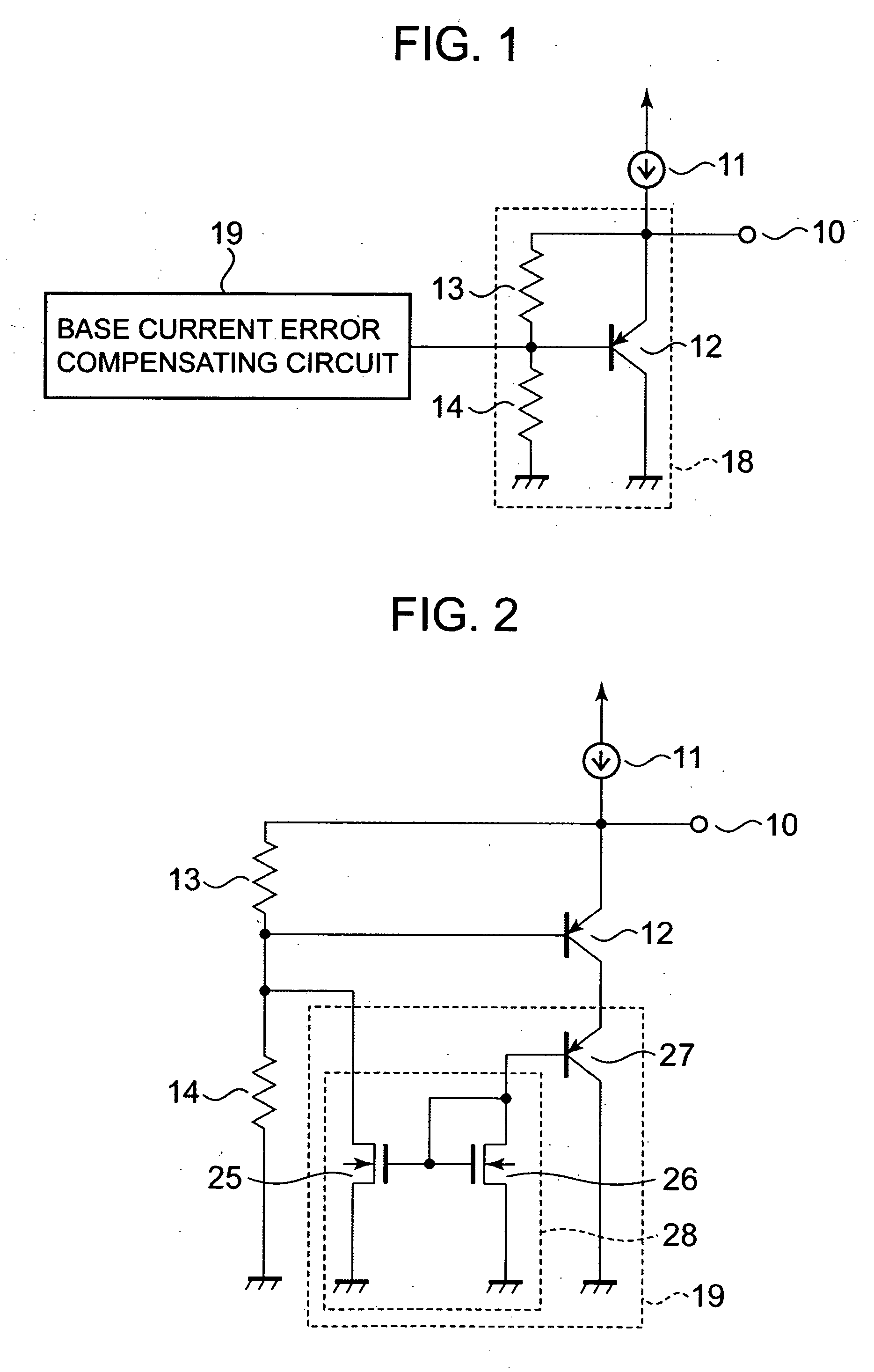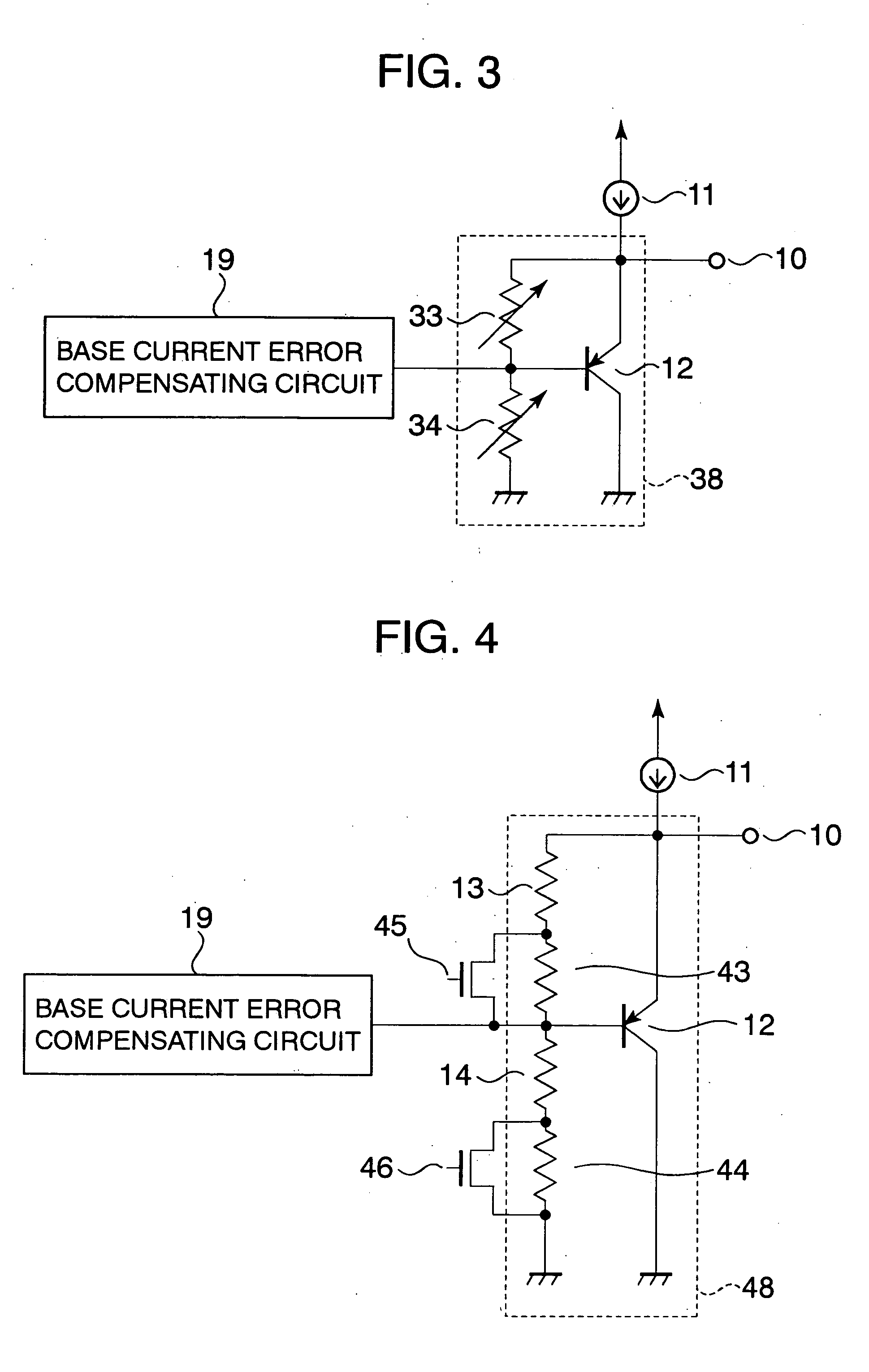Temperature sensor circuit
- Summary
- Abstract
- Description
- Claims
- Application Information
AI Technical Summary
Benefits of technology
Problems solved by technology
Method used
Image
Examples
first embodiment
[0018] A temperature sensor circuit according to a first embodiment of the present invention is shown in FIG. 1. The temperature sensor circuit of the first embodiment shown in FIG. 1 is such that a base current error compensation circuit 19 is provided in the temperature sensor circuit shown in FIG. 7. For example, the base current error compensation circuit 19, as shown in FIG. 2, includes a bipolar transistor 27 having a base connected to a drain of a second N-channel MOS transistor 26, and a current mirror circuit 28 constituted by a first N-channel MOS transistor 25 and the second N-channel MOS transistor 26. Note that it is assumed that the characteristics of the bipolar transistors 12 and 27 are equal to each other and their emitter area sizes are also equal to each other, and the characteristics of the first and second N-channel MOS transistors 25 and 26 are equal to each other and their transistor sizes are equal to each other. An emitter of the bipolar transistor 27 is con...
second embodiment
[0019] A temperature sensor circuit according to a second embodiment of the present invention is shown in FIG. 3. In the temperature sensor circuit of the first embodiment, the first and second resistors 13 and 14 are provided as fixed resistors. In the case of the first embodiment, however, if the shift in the output voltage VOUT due to the dispersion in characteristics of the bipolar transistors 12 and 17 and characteristics of the first and second resistors 13 and 14 is taken into consideration, then the fine adjustment of the output voltage VOUT is essential to the design of the temperature sensor circuit. In this case, at least one of the first and second resistors 13 and 14 of the first embodiment is replaced with a variable resistor, thereby allowing the output voltage VOUT to be finely adjusted. As a result, the output voltage VOUT can be set with more highly precision as compared with the case of adoption of the fixed resistors.
third embodiment
[0020] A temperature sensor circuit according to a third embodiment of the present invention is shown in FIG. 4. In the temperature sensor circuit shown in FIG. 4, the variable resistors of the temperature sensor circuit according to the second embodiment are constructed by MOS switches. With this circuit structure, the resistance values of the first or second resistors may be finely adjusted by ON / OFF operation of the MOS switches at a stage of post circuit production, thereby being capable of setting the output voltage VOUT precisely.
PUM
 Login to View More
Login to View More Abstract
Description
Claims
Application Information
 Login to View More
Login to View More - R&D
- Intellectual Property
- Life Sciences
- Materials
- Tech Scout
- Unparalleled Data Quality
- Higher Quality Content
- 60% Fewer Hallucinations
Browse by: Latest US Patents, China's latest patents, Technical Efficacy Thesaurus, Application Domain, Technology Topic, Popular Technical Reports.
© 2025 PatSnap. All rights reserved.Legal|Privacy policy|Modern Slavery Act Transparency Statement|Sitemap|About US| Contact US: help@patsnap.com



